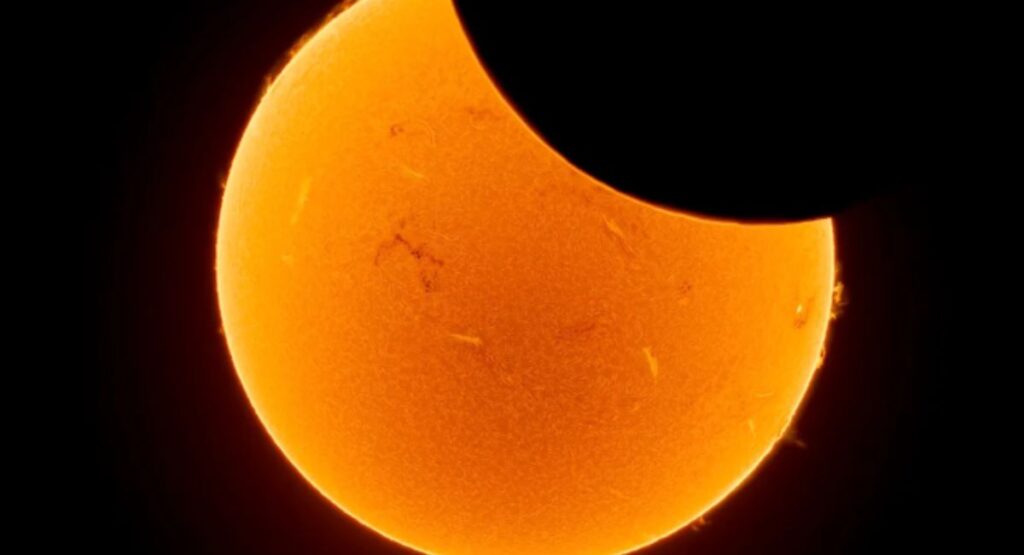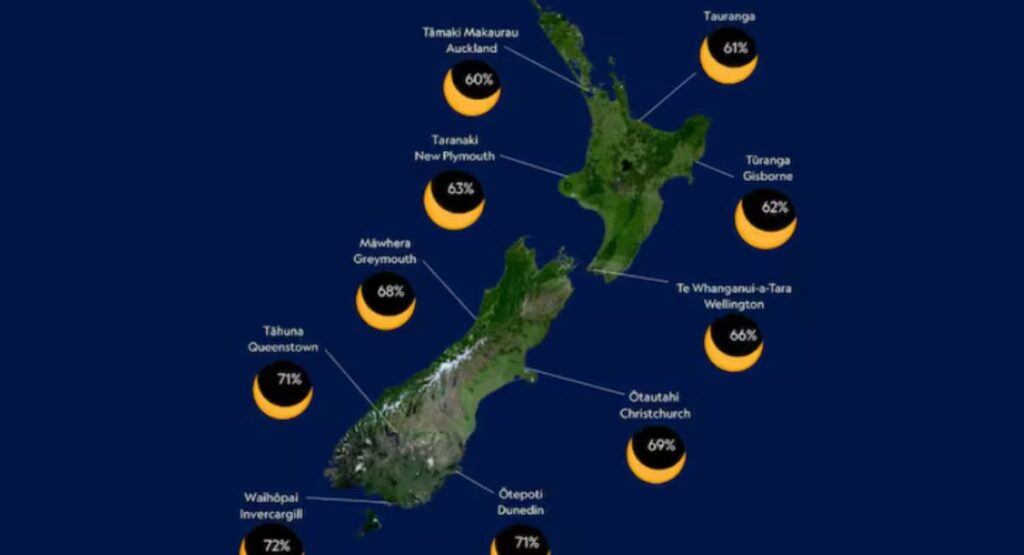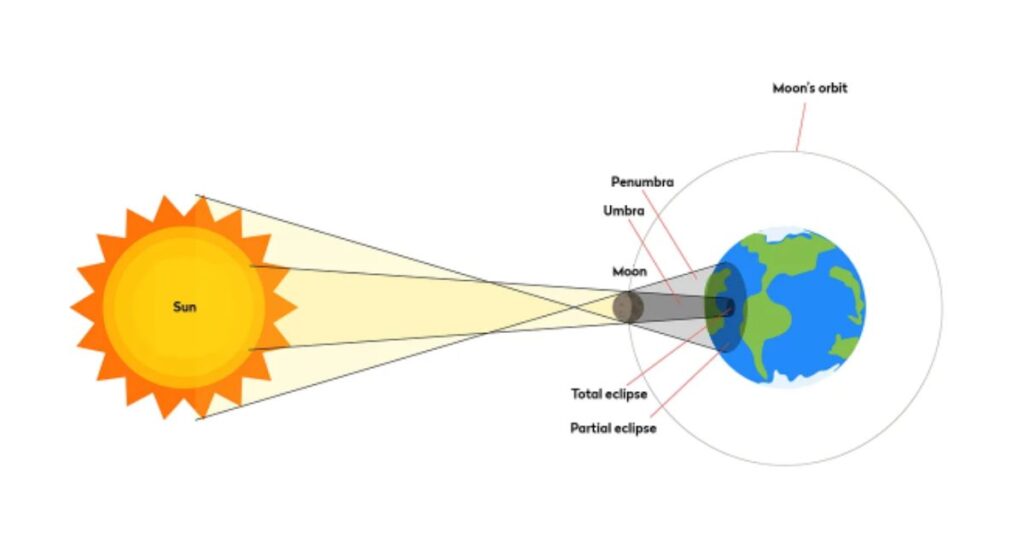
A rare celestial event will greet the skies this weekend as a partial solar eclipse unfolds across the southern hemisphere on September 21–22, 2025. For sky watchers in New Zealand, Australia, Antarctica, Fiji, and Samoa, the early hours will bring an unforgettable view: the Moon appearing to take a dramatic “bite” out of the rising Sun.
This eclipse marks the final solar eclipse of 2025, making it even more significant for astronomers and casual stargazers alike.
A Rare Dawn Eclipse Over the Southern Hemisphere
New Zealanders will be among the luckiest observers. On the morning of Monday, September 22 (local time), the eclipse will align with sunrise, creating a striking image of the Moon partially obscuring the Sun as it rises over the horizon. According to Time and Date, it will be the first solar eclipse visible from New Zealand in over a decade, adding to its rarity.
Other regions, including parts of Australia, Fiji, Samoa, and Antarctica, will also experience the event. While each location’s viewing experience will differ in magnitude and timing, the sight of the Sun’s light dimming at dawn or near the horizon will be universally captivating.
Eclipse Timings by Country
The partial solar eclipse will not be visible worldwide. Instead, it will favor the far southern hemisphere. Here’s a breakdown of approximate local start times across key regions:
| Country/Region | Local Time (Start of Eclipse) |
| Antarctica | 05:15 AM local time |
| Australia | 05:30 AM AEST |
| Fiji | 06:05 AM FJT |
| New Zealand | 06:20 AM NZST |
| Samoa | 05:50 AM SST |

(Sources: Space.com, AccuWeather)
Recent “Blood Moon” In September
Interestingly, this partial solar eclipse comes just days after a dramatic Blood Moon lunar eclipse was visible in the same regions. This timing is no coincidence. Lunar and solar eclipses are connected by the predictable motion of the Sun-Earth-Moon system.
A lunar eclipse occurs during a full Moon, when Earth is directly between the Sun and the Moon. A solar eclipse, on the other hand, occurs at new Moon, when the Moon passes between Earth and the Sun. Because of this alignment, a lunar eclipse is often followed by a solar eclipse within a couple of weeks.
Why This Eclipse Is Special
Unlike the dramatic spectacle of a total solar eclipse, this event is a deep partial eclipse—the Moon will cover a significant portion of the Sun, but not all of it. Still, its unique timing at sunrise makes it visually stunning, as the sun appears distorted on the horizon with a noticeable shadow missing.
Another reason it’s remarkable: it marks the end of a year of multiple eclipses, becoming the last solar eclipse of 2025. For those who miss it, the wait won’t be long until the skies deliver another surprise.

What’s Next After September’s Eclipse?
Astronomy fans won’t have to wait too long for the next chapter in the eclipse story. On February 17, 2026, an annular solar eclipse, often called a “ring of fire” eclipse, will take place over Antarctica, with partial phases visible in Southern Africa and the tip of South America (Sky at Night Magazine).
Later that same year, on August 12, 2026, the world will witness one of the longest total solar eclipses of the 21st century, with totality lasting over six minutes in parts of Greenland, Iceland, and Spain (Universe Today).
Safety Reminder
As with all solar eclipses, never look directly at the Sun without proper eclipse glasses or solar filters. Even during partial coverage, the Sun’s rays can cause permanent eye damage.
Final Word
The Partial Solar Eclipse of September 21–22, 2025, is a rare dawn spectacle that only a handful of regions in the southern hemisphere will experience. Whether you’re in New Zealand, Australia, or as far south as Antarctica, this event promises a breathtaking reminder of the cosmic clockwork that connects lunar and solar eclipses.
For many, it will be the first solar eclipse seen locally in years—and the last chance to witness one in 2025.
FAQs About the September 2025 Partial Solar Eclipse
Q1. What time is the partial solar eclipse on September 21–22, 2025?
The eclipse will begin at dawn in the southern hemisphere, with start times around 6:20 AM in New Zealand, 5:30 AM in Australia, and similar times across Fiji, Samoa, and Antarctica.
Q2. Where will the September 2025 partial solar eclipse be visible?
It will be visible across New Zealand, Australia, Fiji, Samoa, and Antarctica, but not across Europe, North America, or most of Asia.
Q3. Why is this partial solar eclipse considered rare?
It’s rare because it coincides with sunrise in New Zealand, making the Sun appear as though a “bite” has been taken out of it. It’s also the last solar eclipse of 2025.
Q4. What’s the difference between this partial solar eclipse and the upcoming 2026 eclipses?
The September 2025 event is a partial eclipse, while February 2026 will bring an annular “ring of fire” eclipse, and August 2026 will feature a total solar eclipse lasting over six minutes in some regions.
